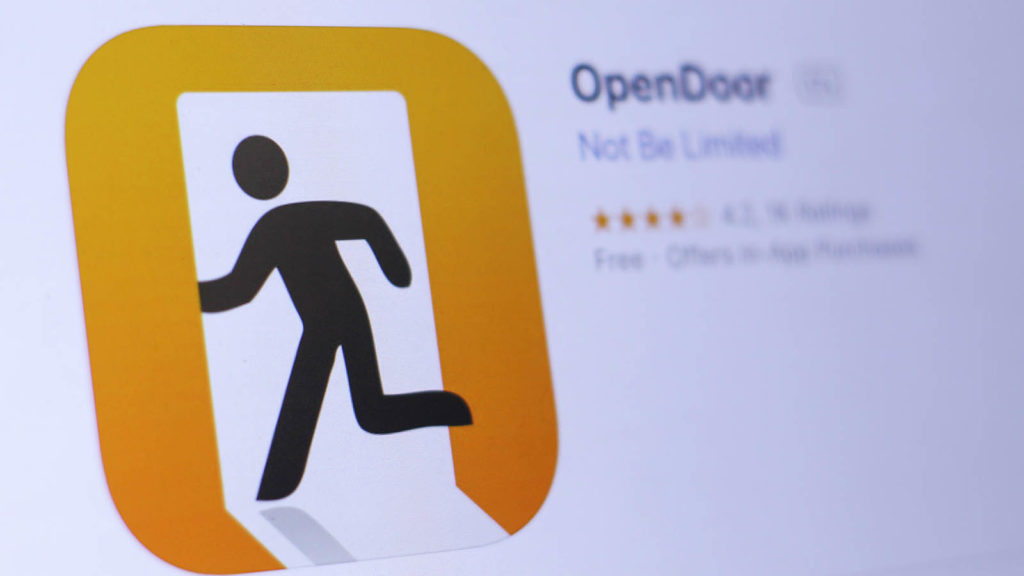- After a terrible plunge, OPEN stock finally looks interesting.
- However, the sustainability of the housing market is questionable.
- Ultimately, OPEN remains a speculative venture.

Opendoor Technologies (NASDAQ:OPEN) stock didn’t just print red ink this year, it has veritably hemorrhaged its valuation.
Since the first session of 2022, OPEN stock has lost 40%. Over the last year, it’s down something closer to 60%.
Opendoor’s iBuyer business model leverages technology to facilitate instant offers for homes, Opendoor delivered the goods during the coronavirus outbreak.
However, as society became acclimated to Covid-19, the need for quick and relatively contact-free real estate transactions gave way to home sellers seeking the absolute highest price possible in a market environment dramatically favoring them. Therefore, OPEN stock lost some of its early relevance.
Still, shares are back up again, gaining a stunning 14% on the March 22 session. Is the table turning on Opendoor bears or should investors remain pensive?
A Closer Look at OPEN Stock
Over the trailing two years, many analysts and journalists have referred to the current housing boom as unprecedented. I’m not going to disagree. Certainly, several elements of the circumstances leading up to skyrocketing prices — the pandemic being the most obvious — are unprecedented in the modern age.
However, upon assessing historical housing data from the U.S. Census Bureau, the price increases look a lot less unprecedented.
In the third quarter of 2021, the average sales price of houses sold in the U.S. increased 18.9% year-over-year. However, in Q2 1973, the year-over-year increase was 19.4%. Not much difference but to be mathematically accurate, the housing price surge is not unprecedented: it’s been done before.
So, does that mean you should buy OPEN stock?
To be fair, the housing supply argument that real estate experts espouse has a ring of truth. In 1973 the oldest of the baby boomers were in their mid-to-late 20s, prime homebuying age back then (and still largely is today).
Right now, millennials are entering the housing rush full force, leveraging the same demographic muscle that the boomers did decades ago. And since housing prices generally increased in the 1970s — and the 80s and 90s and half of the 2000s — it might seem like a great bet to buy OPEN stock at a discount.
Don’t Forget the Caveat
But before you dive into OPEN stock on the assumption that history will repeat itself — or at least rhyme — you should be aware that there’s one glaring omission in the above analysis: the money supply.
If you take a look at real M2 money stock data provided by the Federal Reserve Bank of St. Louis — drilled down into quarterly averages on a year-over-year basis — you’ll notice first and foremost that the magnitude increase of M2 money in Q1 2021 is dramatic, 23.3% year-over-year.
No other time in recorded history comes close to this magnitude. There were a few pops in the 1970s and 1980s that got close to the 10% level. In Q2 2009, the money stock increased by 10.13%. So we’re more than double that supply at a time when the global financial system was on the brink of melting down.
What’s worse, up until the 2000s decade, every time the money stock got close to increasing 10% year-over-year, the magnitude of growth eventually went negative. Today, we’re not even close to going negative. As of the latest read in Q4 2021, the growth in money stock stands at 5.6% year-over-year.
That’s alarming because it signals that the Fed is woefully behind in addressing the inflation consumers are suffering from. At a certain point, prices can only go so high until you start introducing severe financial and even social toxicities into the system.
Caution Is Still Warranted
While I may come off as the least adventurous contributor for InvestorPlace, I genuinely believe that caution is still warranted for OPEN stock. Frankly, I don’t like chasing technical swings higher when the fundamental challenges for the underlying company have not been addressed.
In Opendoor’s case, I need to see the Fed attack the money supply issue. Given the rather alarming data I’m seeing, I’d rather wait a bit before putting serious money at risk with OPEN stock.
On the date of publication, Josh Enomoto did not have (either directly or indirectly) any positions in the securities mentioned in this article. The opinions expressed in this article are those of the writer, subject to the InvestorPlace.com Publishing Guidelines.
